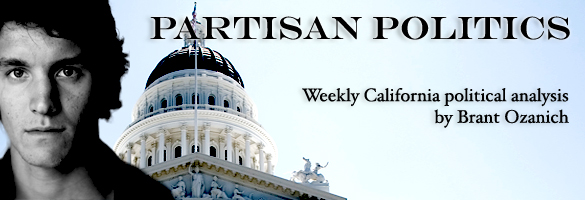Sacramento goes to new depths over budget deadlines
By Brant Ozanich
The Guardsman
Sacramento is looking at a very busy summer this year. While the legislature fighting to pass the budget and close the remaining $9.6 billion gap, the June 15 deadline set by California’s constitution is approaching quickly.
Even with this deadline, a budget has rarely passed by that date in previous years. This year should be different though, thanks to Prop 25, which freezes legislators’ pay if a budget is not approved by the deadline. The proposition was passed last November after receiving a spot on the ballot by citizen initiative.
Last week the California Controller’s office stated that it plans to freeze legislator pay if the budget wasn’t passed by June 15, quelling many theories that legislators would keep receiving pay because of the partial budget passed in March.
While Prop 25 is inherently flawed for allowing spending cuts to be passed with a 51 percent simple majority and requiring taxes to be passed with a two-thirds super majority, the fact that it holds legislators accountable by using their pay as leverage will bring more timely results than years past.
Although the controller hasn’t issued a statement directly mentioning the partial budget passed in March, it can be assumed that the legislature will have their pay frozen until a balanced budget is passed.
Lawyers and the legislature have stated that the March budget was sufficient to fulfill Prop 25’s requirements, but citizens and many offices in the state will undoubtedly fight this statement.
While initiatives in California have led to disastrous results in the past by prompting spending, or removing taxes without the appropriate reciprocation (look at Prop 13 and 98), Prop 25’s ability to hold the legislature accountable is in accordance with direct democracy.
Effects of redistricting a mystery
The California Citizen’s Redistricting Committee, also established by initiative in 2008 (Prop 13), plans to release the first draft of their new legislative district map June 10, which is due to be finalized Aug. 15.
The map is somewhat controversial — mainly within the legislature — as it re-draws former “gerrymandered” district lines that the legislature themselves drew. So far, only a few very rudimentary images have been released.
If drawn how the initiative intended them to be, the result from these new districts could be an overhaul in a number of districts, changing the makeup of California politics drastically. Who it will benefit, no one is sure at this point.
Prisoners set free
On May 23, the Supreme Court ordered California to release upwards of 46,000 prisoners over the next two years; it is the biggest ever prisoner release mandate in California.
Many of the released will be low risk offenders, brought in on strict laws and sentencing for victimless crimes. While many think that this will result in higher crime rates, they fail to understand that this is inherently better for California.
Because the court cited overcrowding and needless suffering as key reasons for its ruling, prison spending will likely remain the same to retain a high quality of life for the remaining prisoners.
Therefore, one can ignore budget issues and look straight to the sociological ones behind the release. Because prison is practically a training ground for criminals, releasing tens of thousands of low-risk offenders will eventually do more good than harm.
These petty criminals who most likely screwed up once and got sent to the slammer can now reintegrate into society and become productive citizens, rather than becoming more corrupt and criminally minded in our state’s gang, drug and murder-infested prison system.
Email:
bozanich@theguardsman.com


Comments are closed.